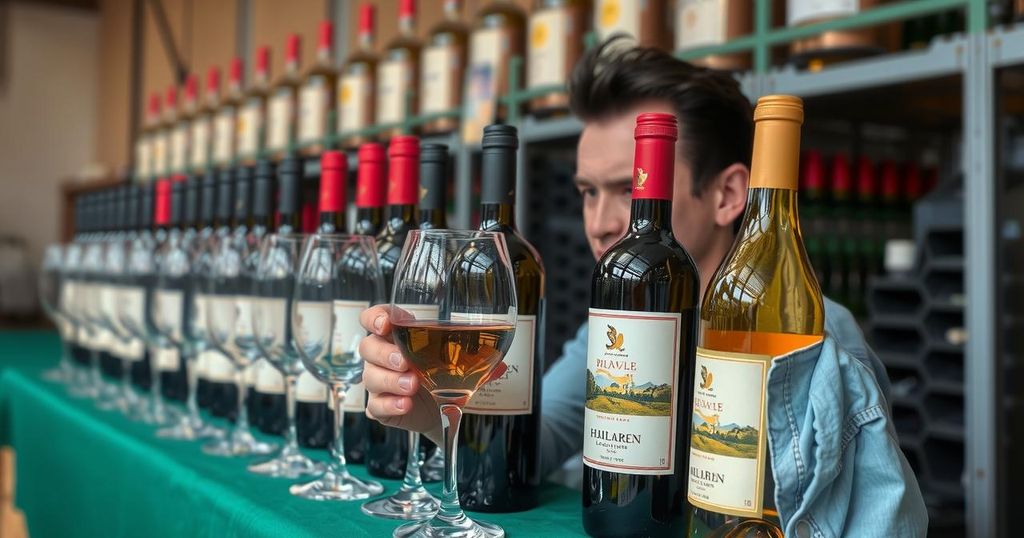The Wine Industry Crisis: Navigating a Shift in Consumption and Production

The global wine industry faces a crisis with consumption at a record low, affected by health trends, economic pressures, and changing social behaviors. In China, wine consumption has dropped by over 60% in five years, while France shows an 80% decline since 1945. Simultaneously, vineyard production has fallen significantly, raising concerns about the industry’s future viability.
The global wine industry is currently facing a crisis, with both production and consumption at alarming lows. Worldwide wine consumption is reportedly at its lowest level since 1996, notably impacted by a 60 percent drop in China over the last five years and more than an 80 percent decrease among French consumers since 1945. This phenomenon has prompted concerns about the future of red wine, described by the Financial Times as undergoing an “existential” crisis, as consumption trends shift away from traditional practices.
Several interrelated factors contribute to this drastic decline in wine consumption. A growing trend toward moderation, commonly referred to as “sober curious,” is fueled by health and wellness concerns among consumers. Additionally, there has been a notable shift toward quality over quantity in beverage choices, along with a rising preference for cocktails. The impact of social media, particularly among Generation Z, prioritizing positive imagery and experiences, has led to fewer social gatherings where wine would typically be consumed.
Economic factors also play a significant role, with consumers becoming increasingly price-sensitive. As indicated by a student in London, “Even if I did want to get drunk, I couldn’t afford it.” Furthermore, health warnings from authorities, such as U.S. Surgeon General Vivek Murthy, who has advocated for labeling alcoholic beverages due to cancer risks, have intensified consumer apprehensions, likely affecting purchase patterns.
The simultaneous decline in wine production exacerbates the situation. The International Organisation of Vine and Wine (OIV) reports significant losses in vineyard acreage globally. Consequently, the wine industry faces an uphill battle, with decreasing consumption compounded by dwindling supply, creating a challenging environment that may persist for the foreseeable future.
The global wine industry is currently experiencing a polycrisis characterized by substantially reduced production and consumption levels. The shift towards moderation in alcohol consumption, particularly among younger demographics, alongside economic challenges and changing social behaviors, has profoundly impacted traditional wine markets. Historical consumption data illustrates a significant decline in wine intake, sparking concerns among industry stakeholders about sustainable practices and market adaptability moving forward.
The wine industry is grappling with a critical decline in both production and consumption, leading to fears of a long-term crisis. With health trends encouraging moderation, economic pressures limiting consumption, and a simultaneous loss of vineyard land, the future of the wine market appears uncertain. Stakeholders must adapt to these evolving consumer preferences and market conditions to stabilize and revitalize the industry.
Original Source: www.scmp.com








